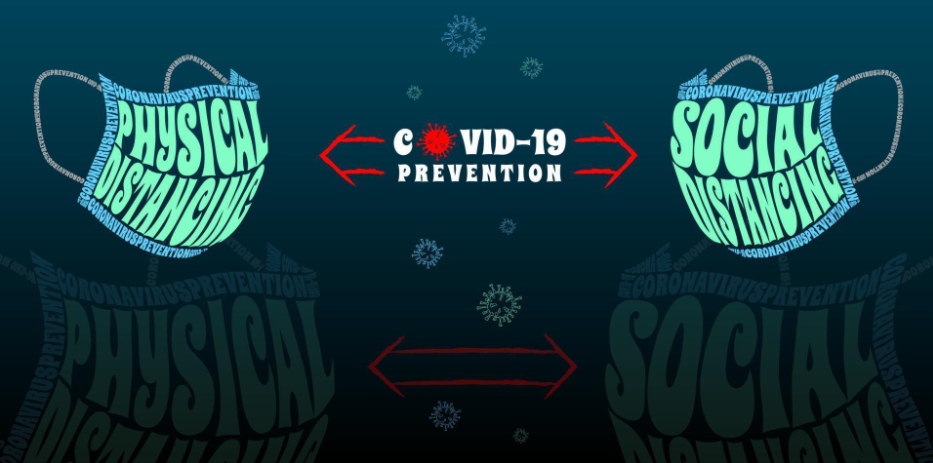These are the latest home isolation guidelines as of January 2022. Please note that these can keep changing.
Has someone around you tested coronavirus disease (COVID-19) positive?
Like your roommate, or your sibling?
Or is someone at home developing fever, cough, or has an achy body and exhaustion?
Since the start of this pandemic, many of us have found ourselves in such a situation without knowing what to do next.
COVID-19 spreads when you come in close contact with the infected individuals. Most COVID-19 patients have had mild symptoms or no symptoms.
Such mild or asymptomatic cases recover well at home with minimal treatment and proper medical guidance.

Here is some guidance on what you can do while you or someone at home have tested COVID-19 positive and needs home isolation.
The Ministry of Health & Family Welfare (MoHFW), Government of India, has been constantly updating guideines to keep up with the mutations that the COVID virus is undergong.
Here are the latest guidelines for home isolation of mild or asymptomatic COVID-19 patients. Follow these steps so that you can care for the patient and prevent the spread of COVID-19 infections among other family members.
Home Isolation COVID-19 Rules
At home, you can quickly spread COVID-19 infection as you are continuously in contact with other family members.
Hence, the first step to stop spreading this infection to others is to isolate yourself as quickly as you notice the first symptoms of a possible COVID-19 infection.
Home isolation means you need to stay in a separate room and use a separate bathroom.
In Karnataka, those with COVID are to isolate themselves for 7 days from the time they have a positive test.
How Do You Take Care Of Yourself When In Isolation?
If you are home isolated due to COVID-19 infection, you need to follow these steps:
Keep your distance
Stay away from other people at home, especially from patients who are elderly or those who have illnesses such as cancer, diabetes, heart disease, and high blood pressure.

It is these patients who are vulnerable to contracting more severe COVID infection.
Do not share anything you use with your family members.
Stay In A Well-Ventilated Room
Keep windows open so that fresh air always comes into your room. Circulating air will move the virus around and prevent it from building up in one space.
Use A Triple Layer Mask
Use an N95 mask (preferably) when your caregiver enters the room.

Discard the mask after every eight hours of use, especially if it has become dirty or wet. Do not wash and reuse your mask.
You can discard your mask by cutting it into pieces and keeping it in a paper bag for at least three days before discarding it.
Get Some Rest And Eat Well
Take sufficient rest. Get a good night’s sleep. Drink ample fluids to remain hydrated.
These small things go a long way in building your immunity against the infection.
Choose the right fruits and vegetables to boost your immunity against the infection.
Wash Your Hands
Clean your hands often using soap and water for 40 seconds. Alternatively, you can use an alcohol-based sanitizer that contains at least 70% ethanol.
Frequently clean all the places you touch using soap/detergent and water.
Watch Your Vitals
Continuously self-monitor your body temperature, oxygen saturation, heart rate, breathing, and symptoms.
Create a chart where you can record this at different intervals
Use a pulse oximeter for checking your oxygen saturation and heart rate. They are available on Amazon freely.
To monitor your breathing, sit and breathe normally and see the number of breaths you take in one minute
Caregiver Instruction
If you are a caregiver to a COVID patient, follow these steps –
- Cover yourself – you could use a disposable gown to help keep your covered.
- Wear an N95 mask. Do not touch the front portion of your mask.
- Change the mask immediately if it gets wet or dirty
- Discard the mask by cutting it into pieces and keeping it in a paper bag for a minimum of three days.
When encountering the patient in the isolation room, use gloves that are disposable and avoid direct contact with the saliva or respiratory secretions of the patient.
Do not use any items the patient uses, e.g., utensils, towels, drinks, etc.
Wash the utensils used by the patient using soap and water. Wear gloves while washing their utensils or other items.
Use mask and gloves while managing clothes or surfaces touched by the patient.
Closing Remarks
These steps might seem a little over the top, but following these can help lower the spread of the infection.
- Understanding Iron Deficiency Anemia: A Guide for Patients - May 31, 2025
- CT Coronary Calcium Score: A Guide for Patients - January 7, 2024
- Gastric Antral Vascular Ectasia (GAVE) – Causes, Diagnosis, and Treatment - August 5, 2023

